#species concept
Photo

Meao-ixuí teeth concepts
#meao#meao-ixui#original species#species concept#artists on tumblr#brart#brartist#brazilian artist#maw#jaw#teeth#mouth#mouths#art#digital art#fantasy#fantasy art#worldbuilding#fictional species
21K notes
·
View notes
Text
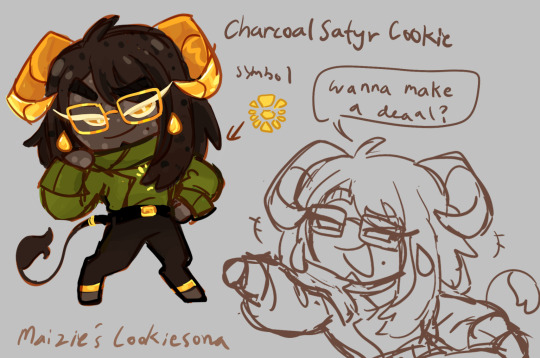
aYY finally, here's a cookiesona I made a bit ago! I'd like to use them a little more for content. They've got some lore regarding their Satyr title and I used them to swoon one of my friends' cookies as a shitpost

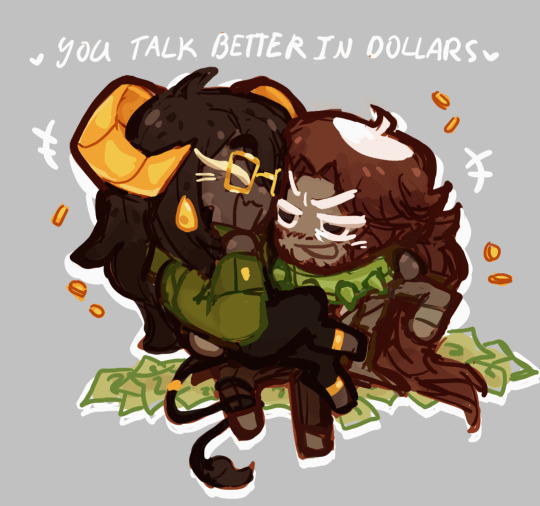
(below is text info)

Charcoal Satyr Cookie is part of the satyr cookie race, who were once believed to only have males, breeding with different races to produce more of their kind (though this is misinformation, as satyrs are known in folk tales for their.. inappropriate appetites.)
In reality, both female and male satyrs have the same body form/type, and females are actually bigger than males at a majority! Intersex individuals come around very often.
They only develop breasts/start lactating when they get pregnant! They disappear after a little while afterwards,
"In the far past, Satyrs (in cookie history) scavenged and raided kingdoms, and were the symbols of mischief and crime- associated with the devil. After the Dark Flour War, they disappeared without a trace. Centuries later, they re-awoke again, as if risen from the dark flour itself. Burnt, cracked, molded."
Satyrs, in true history, were a nomadic race who traded labor for resources, and often found themselves tricked/manipulated into unsustainable work. In revolting for better rights, they were driven underground, and continued to be used for unpaid labor when they were ever found outside- except now with the mask that they were a feral race. They stayed dormant after Dark Flour War, until the decline of cookies brought them back up to the surface, where they built permanent clans and villages and developed civilizations wherever there were satyrs left- though their population was greatly affected by their history.
With cookies returning, original relations returned with a couple of changes. With the establishment of peace, Satyrs once again used their strength and efficiency for labor. In the little time Cookies came back, they developed great things, and have supported the satyrs with their own developments.
Satyrs hold great value to contracts and deals, and their culture is all about "Pay your dues, Return what you take. Profit is priority."
They are often decorated with all sorts of metal accessories- differing with clan and their origins. The more decorated a satyr is, the more powerful and credible they are! To be profitable enough with your deals to look like that.. you must be trustworthy.
The yellow symbol on Charcoal's outfit is an insignia of their clan, which wear golden accessories!
With modern ages, "labor" is viewed differently now in Satyr culture- and not all are physical workers, regardless, power and prestige are valued greatly in their culture!
#charcoal satyr cookie#satyr cookies#species concept#cookie run#cookie run kingdom#crk#cookie run oc#crk oc#cookie run fanart#my art#crk fanart#cookiesona#persona
263 notes
·
View notes
Text


Dendrabor
I created a fantasy species for an art challenge! Tree people 🌳
#character design#character concept#concept art#species concept#original species#tree people#trees#artists on tumblr#art#procreate#viperiumart
126 notes
·
View notes
Text


Here is Two-Three (or just 23), my main little Crescent. Also yes, I have renamed Zooids to Crescents. It was a working name anyways, and felt a bit silly. I chose this new name because of the shape of the sophonts’ cranium, and also since they originate from a moon. A good fit I think
Two-Three isn’t that complex of a character; he mainly serves as a way for me to make crescents interact with my other aliens haha. He lives on a base that resides in the small asteroid belt of Eschvèu, where lost of other aliens often congregate. And not just of that star system either…!! With the power of fiction I can say he probably meets humans, why not.
Most Crescents communicate by using their abdominal fins, but Two-Three has gotten used to gesturing with his feeler as well. He finds it more fun too. Although, since Crescents cannot vocalize in articulate forms, he still uses his fins as base signing. The most Crescents can make is a loud pinging noise, or “whimpering “. Usually when they are emotionally/physically distressed.
#spec evo#speculative biology#speculative evolution#spec bio#xenobiology#alien#alien art#my art#digital art#original character#creature design#species concept#sophont#intelligent species#Crescents
184 notes
·
View notes
Text
Categorizing the Uncategorizable
(or, the divine is stored in the infinite mystery of life on earth)
I swear this is about lichen genomics but it’s not not about gender
Recently I was asked “What do you think of species described only from DNA?” That is to say, species not morphologically distinguishable from others but when tested genetically, show up with results different enough that some people have decided they count as a different entity.
Over and over again in my (short) career as a biologist I keep running across the question “What is a species, really?” It doesn’t seem like something that would be the subject of ongoing debate. We should be able to tell the difference between different types of creatures, right? Even if they look similar, if they can’t breed and produce fertile offspring, they are not considered to be the same species. This works for most vertebrates, as far as I know, but a brief glance at botany makes everything infinitely more complicated. Different species of plants are absolutely capable of interbreeding and producing fertile hybrids (that’s how we get so many fun cultivars to grow in our gardens). And by the time one considers lichens, the concept of “species” is more of a vague suggestion, or a shorthand we’ve all agreed to use while acknowledging its drawbacks.
Lichens are always already at least two species – a fungus and a photosynthetic partner (green algae or cyanobacteria) – combined into one “body” that looks unlike either partner would if grown separately. They are recognizable entities, a whole that is more than the sum of its parts, but the parts are always visible in cross section, or in the genomic data. And this is without even mentioning the myriad species of other fungi and bacteria simmering in the lichenological stew. The lichenological community decided to use the Latin name of the fungal component to refer to the whole lichen, since the fungus makes up the majority of the biomass and seemed to determine the morphology while the photosynthetic partner was more or less along for the ride. The same species of alga is also known to partner with different fungi to form different lichens, which was taken as evidence of its relative non-selectiveness versus the fungal partner’s specificity (something that has more recently been called into question). Regardless of one’s stance on the fungi-centric model, we can all agree that the idea that one genome=one species does not apply to lichens.
So why do we call lichens “species” anyway? Well, what else would we call them? They are distinct entities that live and reproduce and play particular roles in an ecosystem. They can be identified by their distinctive morphological features. And when so much work in biology relies upon knowing “what lives where”, we need to have a name for the “what”. So, we’ve given imperfect names to capture some aspect of our infinitely interconnected world. This is something we need to do, for the sake of communication.
But just like words can never quite capture elusive and complex feelings, grouping a set of organisms together and calling them a Latin binomial will never quite express the reality. We are only human, after all, and as much as we learn about the world around us, we are limited in the scope of what we can understand. I don’t think we will ever unravel every mystery in the natural world, and that’s not a bad thing. The more we learn, the more questions we have. What I’m getting at is that we can never have an omniscient view of every single biological interaction ever. We research and study and we get an approximation. It might be a very good approximation that answers our questions and contributes to our body of knowledge, but it is still an approximation impacted by the limits of our perception and our implicit biases.
The way I see it, using our human perspective to apply categories to the natural world is always a functional endeavor. We do not name lichens because we think this is what the lichen would call itself, or even what god would call the lichen. We name them because we are interested in them and we need something to call them when we talk to other humans. Endangered species lists are just that – lists of species. We wouldn’t be able to protect rare lichens without assigning them a species and putting them on the list. There will always be exceptions, and edges, and individuals that don’t quite fit. Evolution is always happening; we see populations that are not quite different enough to be their own species, but we can tell that one day, thousands or millions of years from now, maybe they will be. What do we name these? Perhaps a subspecies or a variety, perhaps not. The important thing is not that we’ve discovered the One Truth of the Universe, but that we are close enough to accomplish what we need to accomplish.
But are DNA sequences enough to define a species? I think not. We must consider again not what a species is, but why we describe species. We do not describe species for the sake of making up a name for a slightly different DNA sequence, we do it to categorize an entity we are interested in. If two lichens look the same, contain the same chemicals, and fill the same ecological niche, are they really different? And if they are, are they different enough to matter?
This is not an indictment of the act of naming species, or a call to stop trying to study and understand what appears unknown and unknowable. It is simply an encouragement to think more critically about categories and why we categorize. Why is it important to tell these two things apart? In what context would it become important? What would it look like to treat them the same? How much more can we learn from thinking consciously and openmindedly about what we mean when we say “this is a species”?
#lichen#lichens#lichenology#lichensplaining#science#biology#species concept#species#evolution#taxonomy#genomics#gender
234 notes
·
View notes
Text

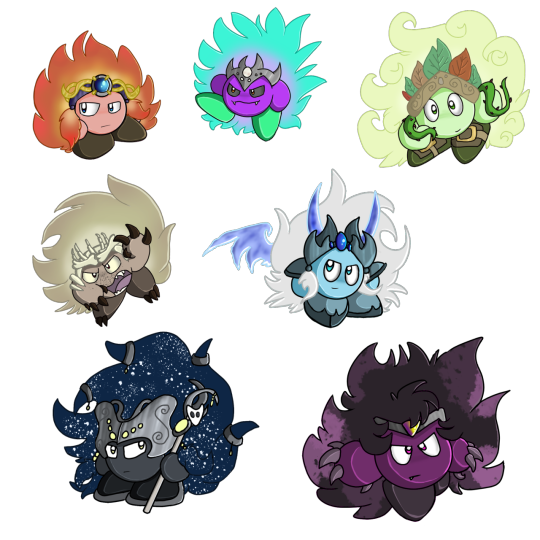
Redraw of this October 2022 concept art. I posted ‘what if there was other types of leos besides burning leo’ back when I first made this blog. Now I redo this concept, but with more lore! Below is a document detailing the biology and social/cultural habits of each of these leos.
#hoshi no kirby#kirby#kirby right back at ya#art#kirby art#kirby oc#kirby of the stars#kirby au#digital artist#burning leo#kirby fandom#species concept#I live I promise my pen just got lost so I had to order a new one and I have so much art to catch up on#will be answering some of the asks next#if I can stop hyper fixating on this#actually frothing at the mouth I love species lore#like if you wanna ask questions about them please go ahead I will explode
7 notes
·
View notes
Note
This could possibly be a drawing prompt, not too sure though, but I was scrolling on Twitter and found someone's take on a tundra yautja, and figured I'd ask, what your idea of a tundra sub-species of yautja would look like?
P.S. I absolutely love your characters, the river clan, and Gahntha-tce most of all..I'm a sucker for edgy badbloods! 😌😏
I really have to thank you for this prompt. I had such a blast with it (might even went a bit overboard but we gonna ignore that)


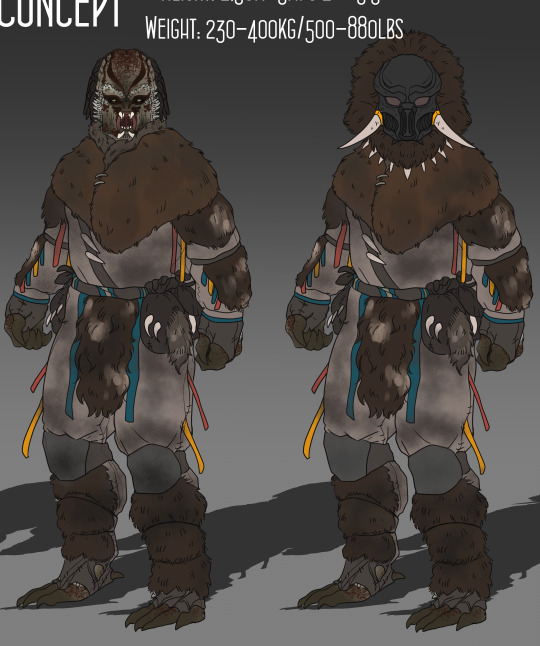
lot of oc lore stuff under the cut
So let's take a look.
First of all, I think the concept of a tundra themed Yautja is really cool, however with this rose some problems with their biology so I had to headcannon and stretch out some stuff. Even though Yautja appear rather reptilian they also seem to be somewhat mammals aswell( maybe we should classify them as space platypus). Yautja Prime seems like a very hot planet and since the mesh "fish net suits"( the correct word slipped my mind so pls excuse) which simulates the hot temperatures from it, so they don't seem to mind cold climate (AVP where they straight up chilled in Antarctica pun intended ), at least not for a short time. However, the tundra yautja would constantly live in arctic climate zones with little to no summertime, so some evolutionary adaptation would be necessary to have happend.
So I took a look on real life animals and indigenous cultures living in said climate zones and came up with some possible ideas.
Physiology
Like real life animals, the tundra yautja would have a large and sturdy build with relatively short limbs and
body appendages. Their mandibles and dreads would be really short compared to common Yautjas, but their bodys would hold way more muscles and fat to keep them warm (they basically all have dadbods and I am here for it). I also like the idea of them growing fluffy feathers to have an extra build of isolation. So basically they are chubby fluffy space platypuses.
They still have sexual dimorphism but more with weight than height, like the males with 8'2" -8'9" and 500-600lbs while females stand at 8'8" to 9'5" and 700lbs to 880lbs
For their colouration I took my main inspiration from the woodfrog, who is the only amphibian found in arctic climate zones. Their blood is also an antifreeze, which means they survive being absolutely frozen.

I also like the idea of them having a summer and winter look

Culture/life
I think the Clans would have more of a tradition tribe vibe to them. Like males and females living together for most of the year, while moving after their prey in a nomadic lifestyle, while hunting groups are always a bit more far off to get food for the whole tribe. Hunting for survival would be much more ingrained in their lives than hunting for sports, which is a rather large difference to common Yautjas (which might get them viewed as a bit more primitive by the others which isn't the truth at all). For me, I like to imagine them as more "friendly " Yautjas with a way more strict honor code, that is focused more on the treatment of other individuals in their tribe. They have to stick together to survive.
Who is in a hunting party is more a question of skill than of gender. Just as any other chore that is necessary to their community
I also really want them to have bear like mounts and a shit ton of dogs
#Yautja#yautja art#Yautja of#Avp#alien vs predator#Predator#Predator of#Concept art#species concept#my art#Tundra yautja#yautja oc#This is all my take#If you have ideas please tell me#I am way to invested#Please feel free to hc and get creative yourself#clip studio paint
163 notes
·
View notes
Text
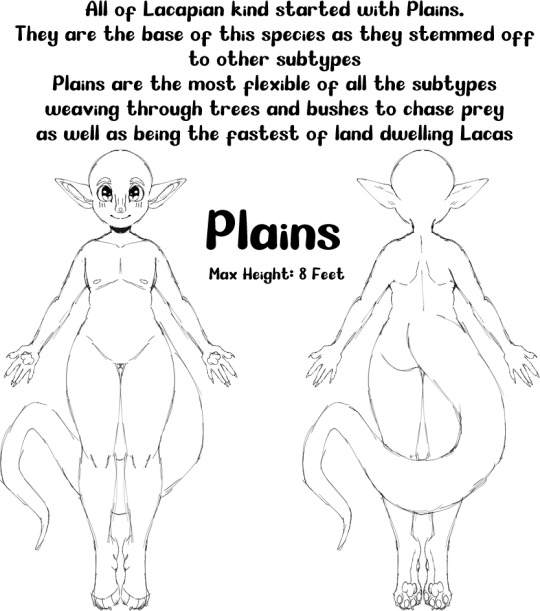






This is my open species called Lacapians!
I've made them a long time ago but have only recently started feeling sort of confident about releasing them to the public

Welcome to the Lacapians, an open species group! We are a community of artists and enthusiasts who love to create and share our anthro/feral species, Lacapians. Lacapians are a race of human-like beings who have evolved from Reptile like Mammalians on Earth. They can have many type of skin textures based on their origin of area, scaly, smooth, fluffy, feathery. They can have any sort of eyes and tails, but they also have hair, ears that are more elven like, and other humanoid features. They can be any color, shape, or size, and they have a rich and diverse culture and history. Some of the most common types of Lacapians are the plains, northerner, aquatics, feral and avian! Who live in all parts of the world, even amongst humans in their society though albeit a very risky thing to do since humans are vigorous predators to Lacapians themselves.
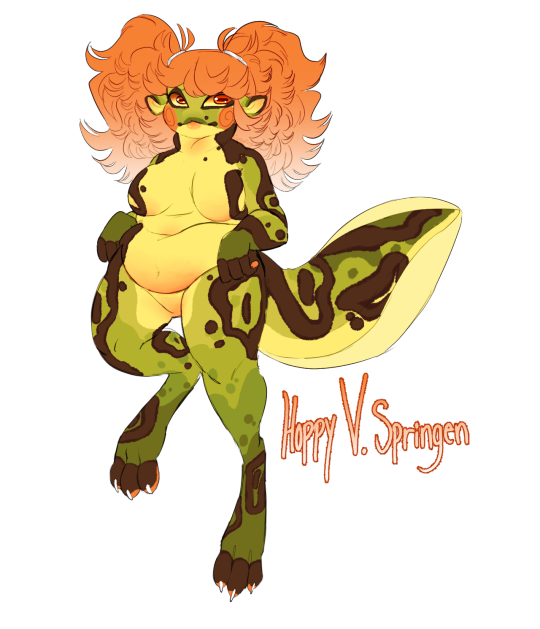

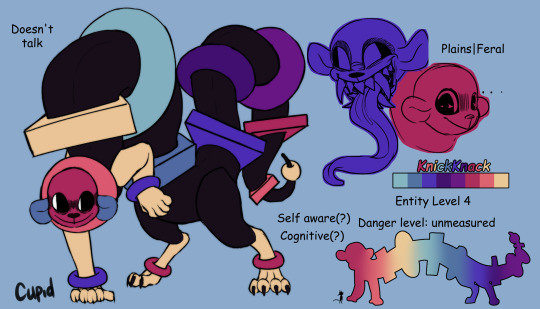
Heres a couple of my own Lacapian ocs!
Everything you wanna read about them is here!
We also have a discord server and anyone is more than welcome to join!
#open species#original species#openspecies#digital art#Lacapians#My species#Original art#reblog > likes#Likes > reblog#species concept#species design#reference#reference sheet#oc design#oc art
13 notes
·
View notes
Text
Clade of the Day: Siderobiota
Welcome to Clade of the Day, where we cover different groups of organisms on the collaborative project Sagan 4. Today's clade is the kingdom Siderobiota, which includes the iron flora and the iron fauna.








(sources: x/x/x/x/x/x/x/x)
Siderobiota is among the few kingdoms of organisms on Sagan 4 to produce both fauna and flora. They are unique for how they use iron--in that they oxidize it as part of their respiration, yet they can only obtain it from their diet. Floral species exist in soils as macroscopic counterparts to iron-oxidizing bacteria; fauna are typically armored, using excess iron in their exoskeletons.
Among the iron flora is the largest single, non-colonial organism recorded on Sagan 4, the orbit voltflora.
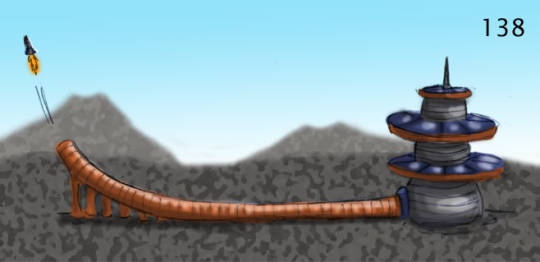
98 species are recorded. Siderobiota reached its peak diversity before the snowball event. In its aftermath, the few lineages that survived suffered heavy losses as their native continent, Barlowe, sank until all that was left were a few islands formed from mountain peaks. Most living iron fauna are parasites, surviving the sinking of their home continent by obtaining all the iron they need from blood.
--
Homepage | Forum | Discord
#sagan 4#speculative evolution#clade of the day#speculative biology#spec evo#creature design#species concept#creature concept#science#taxonomy#worldbuilding#spec bio#alien species#original species
11 notes
·
View notes
Text
Silos - species sheet


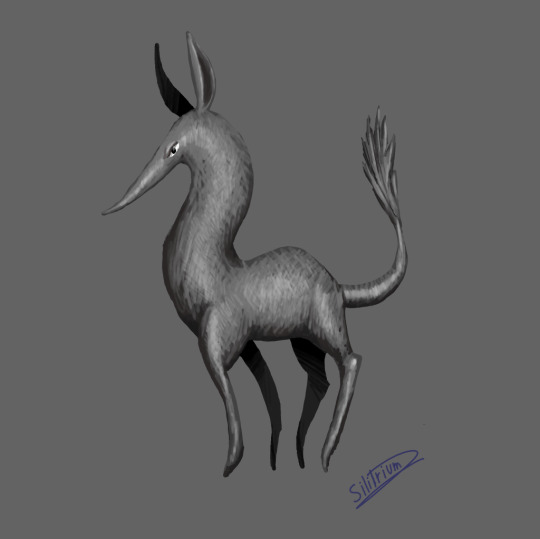
(full lore and more drawings bellow cut)
Silos are tall, long-legged creatures that live in the deserts of the Old Earth. They eat mainly salts, minerals and water, but they occasionally can eat metals and sulphur water. Their pointy and hardened feet allow them to break the rocks on the ground and search for "food" with their long and sticky tongues. They also use their strong legs to travel through the rocky landscapes of a planet Earth that is close to it's final extinction, deprived of most of it animal and vegetal lifeforms.
Very intelligent creatures, they are capable of communicating with humans via telepathy, and they use very loud, deep, trumpet-like vocalizations to communicate with other distant silos. they are capable of doing these sounds thanks to their very strong vocal cords and their long necks. They live solitary but communicate constantly with other distant silos and are in fact very collaborative. They can look intimidating to most other animals but they are harmless, unless provoked.
They are also very long-lived, being able to live for thousands of years. They surpassed human existence and were the last animals alive when the planet collapsed. Some say they were able to travel to other rocky desert planet some way, or maybe their homeplanet is not Earth and that's why that myth exists.
Breeds
Similar to horses, sheep and other domesticated animals on Earth, Silos have different breeds that can be very different in appearance but they can all reproduce with each other. This has created the theory that Silos are actually a domesticated species from another planet, but we may never know.
Curvehorned silos: Very big and with shorter necks than usual. Their main characteristic is a pair of long, thin and strong curvy horns, similar to those of gazelles or goats. They have strong and spiky horsehair. These are among the more common Silos.
Timeskipper silos: Differently to other members of the species, these are gigantic in comparison and have the same kind of horsehair as curvehorned silos, except it's softer. They also tend to move more slowly and travel long distances slower than other silos. Some say they actually perceive the time slowly than other animals, and most of their lives are spent thinking and sending signals to the outerspace, making them in theory the faster-thinkers, smartest and more resilient breed of Silos.
Pygmy silos: Very tiny in comparison to other silos, Pygmy silos have disproportionately big heads and tend to live in areas which soil is softer than rocks. They don't have horsehair.
Coriaceous silos: Silos without horsehair and with a very thin, grey and oily coat that make them look like they are made out of pale leather from afar. These are the more social silos and the ones that are more likely to look for human interaction. Even so, they don't let themselves be tamed or domesticated. They don't have horsehair either.
Strippecoated silos: Silos whose coat is purple with light-purple stripes. They are considered to be exotic.
More pictures










#fantasy creature#creature design#species sheet#species concept#silvertail arts#traditional art#digital art#fantasy art
12 notes
·
View notes
Text

Here’s something I call a puff cat!! It usually is just a squishy cat like thing with dots, but when it’s alarmed it puffs itself out and the dots form spikes
#digital doodle#doodle#drawing#my art#digital drawing#digital illustration#species concept#Competition art#silly little guy
3 notes
·
View notes
Text

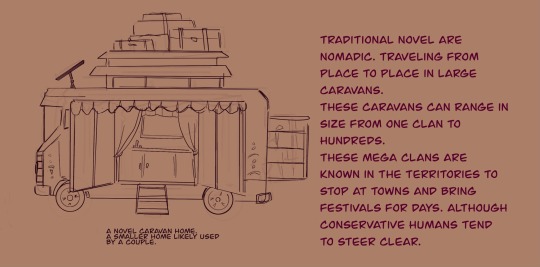
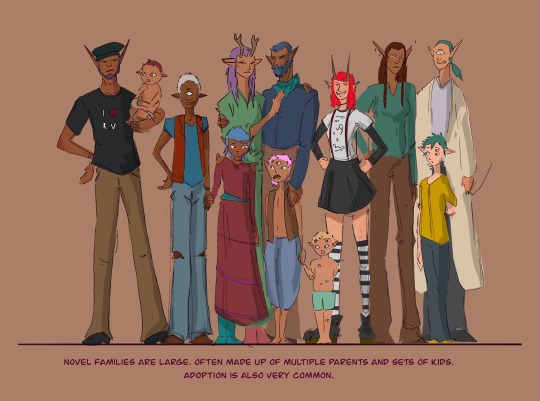
The Novel, the non human race from my upcoming superhero webcomic Deviants.
You can check it out for free on June 30.
#myart#my art#art#deviants#webcomic#concept art#character design#worldbuilding#world concepts#worldbuilding art#concepts#species concept#superheroes#superherowebcomic#superhero oc#superhero
12 notes
·
View notes
Text
The idea —

The execution —

#ink’s scribbles#ink’s art#writeblr#fantasy writeblr#fantasy writing#fantasy novel#character art#concept art#species art#world building lore#fantasy world building#species concept#fantasy art#pygmy cheetah#kingdom: ilinkziya#uvodell: the lost princess#lost princess world building#they’re messengers for the foxes because if they used birds the foxes would simply eat them
5 notes
·
View notes
Text
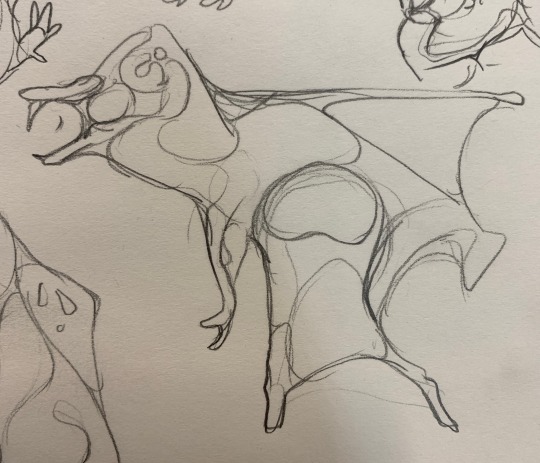

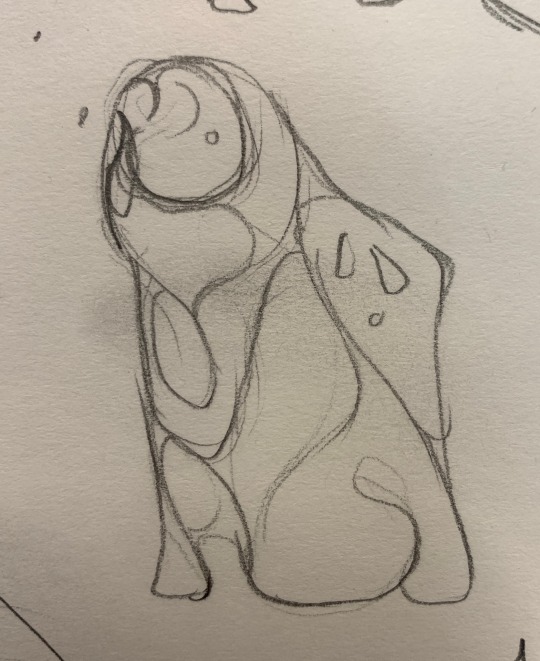




More creatures for the collector world. I want to pump out some “unfamiliar” creatures first, then I have the hardest part mostly finished, and then I can get to just abstractifying normal animals (my logic is that: the demon realm has monsters not related to the human realm, but also has familiar creatures like cats and owls… I am going to assume the same for the collector realm)
I already couldn’t help myself and I made rough ideas of a goose and a chicken <3
#toh#the owl house#the collector#toh collector#cathchicken#sketch#my art#speculative biology#spec evo#speculative evolution#species concept
60 notes
·
View notes
Text

getting back into the beat of making lil creature/species of my own again, here's the first one, call it a Nagialpent, used a lot of crocodile and alligator arm references, but these dudes are big boys of m o I s t habitats or dry ones, depends if ether has a good food source, and they're like 3x the size of the anaconda python.
#creature design#species concept#species design#open species#monster concept#creature drawing#creature creation#animal design#creature concept#concept art
11 notes
·
View notes
Text

pov you've gone on enough dates w me to unlock Controversial Lichen Opinions
#lichen reblog if u wanna read my 1000-word essay on this topic#it is written and ready 2 go#lichen#lichens#lichenology#science#species concept#species
41 notes
·
View notes